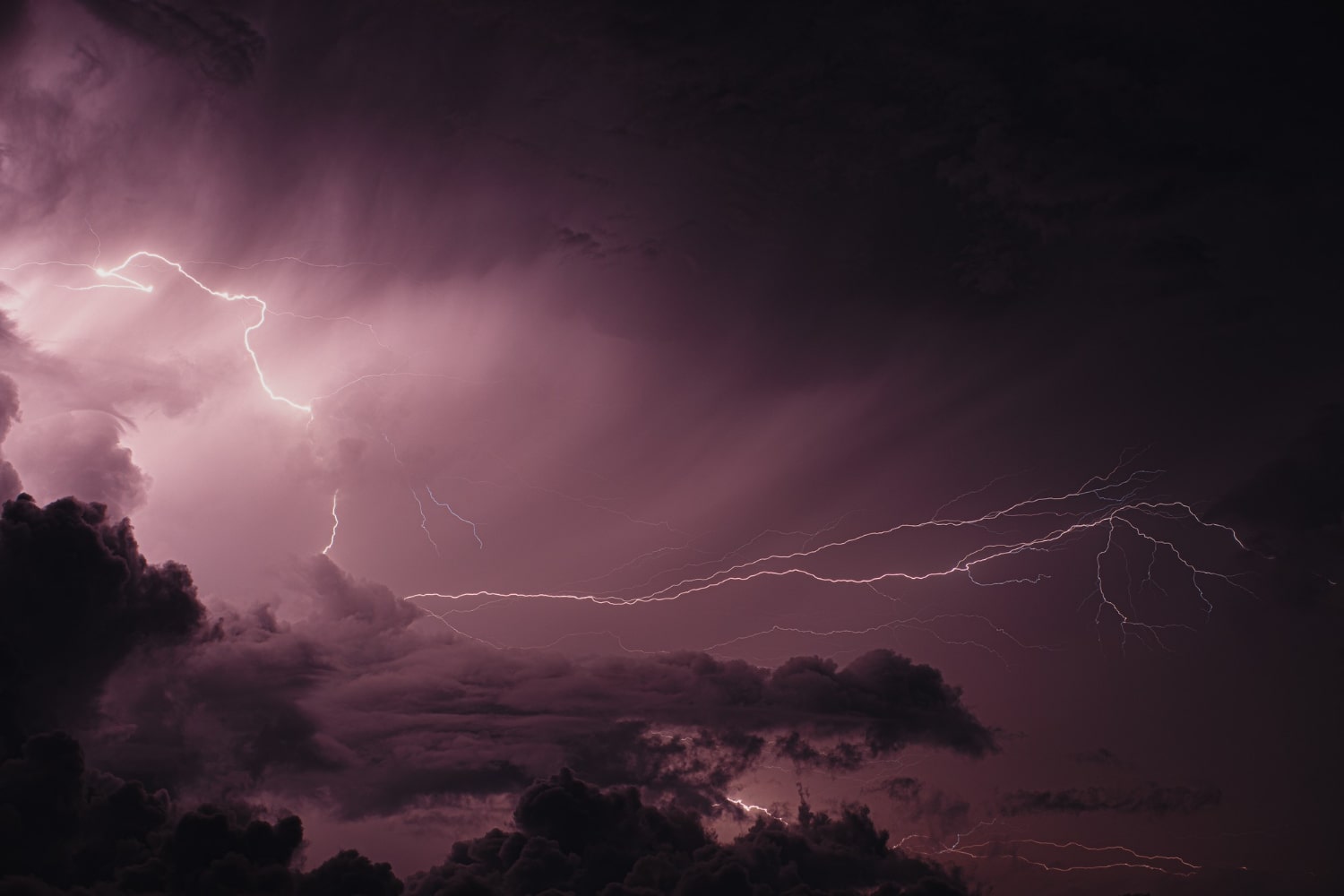Lightning is one of the most fascinating and at the same time dangerous natural phenomena on our planet. It appears suddenly, accompanied by intense flashes of light and thunderclaps that can startle even the bravest among us. Although it seems fleeting, it actually carries enormous amounts of energy and can cause significant damage. In this article, you’ll discover interesting facts about lightning that you may not have known before. Take a moment to be amazed and explore the secrets of this extraordinary phenomenon.
- Lightning forms as a result of an electrostatic discharge between clouds or between a cloud and the ground. The temperature around the lightning channel can reach up to 30,000 degrees Celsius. This is five times hotter than the surface of the Sun.
- Although a lightning bolt lasts only a fraction of a second, its light can be seen from dozens of kilometers away. Thunder follows with a delay because sound travels slower than light. You can estimate the distance of the strike by counting the seconds between the flash and the thunder.
- Lightning follows the shortest path to the ground, which is why it often strikes tall objects such as trees, towers, or buildings. Standing under a lone tree or being in an open field during a storm is extremely dangerous. Metal objects can also attract lightning.
- A single location can be struck by lightning multiple times. The Empire State Building in New York is hit as many as 25 times per year. This disproves the myth that lightning never strikes the same place twice.
- The average lightning bolt is 5 to 10 kilometers long, while its diameter is only a few centimeters. However, some lightning bolts stretch for hundreds of kilometers. In 2022, a record lightning bolt was recorded at a length of 768 kilometers.
- There are different types of lightning, including linear, forked, ball lightning, and upper-atmosphere discharges. Ball lightning is one of the most mysterious types – it can appear indoors and move unpredictably. Scientists still do not fully understand how it forms.
- People struck by lightning can suffer burns, nervous system injuries, or temporary memory loss. Surprisingly, around 90 percent of those struck survive. Their skin may display unusual patterns resembling tree branches, known as Lichtenberg figures.
- In various cultures, lightning has been seen as a divine sign or a tool of punishment. In Greek mythology, Zeus wielded lightning bolts as weapons. In Norse mythology, thunder and lightning accompanied the god Thor and his hammer.
- Lightning does not occur only on Earth but has also been detected on other planets in the Solar System. Scientists have observed lightning activity in the atmospheres of Jupiter, Saturn, and Venus. This demonstrates that the laws of physics operate universally throughout the cosmos.
- The region around Lake Maracaibo in Venezuela is known for having the highest frequency of lightning in the world. Lightning strikes occur there on as many as 300 nights a year, creating spectacular displays. This phenomenon is called Catatumbo lightning.
- Lightning can cause wildfires, damage infrastructure, and lead to power outages. That is why buildings are equipped with lightning rods that safely direct electrical energy into the ground. These safety measures are also used in power plants and communication towers.
- During a storm, lightning can enter a building through electrical wiring or phone lines. It is advised to unplug electronics and avoid contact with water or metal surfaces. Standing near windows or using the shower can also pose a danger.
- Specialized tools like lightning detectors and high-speed cameras are used to study lightning. These instruments help scientists better predict storms and analyze lightning structure. Weather satellites also record atmospheric electrical activity.
- Despite the immense energy in a lightning bolt, there is currently no efficient way to capture and store it. The unpredictability of lightning and technical challenges make this task extremely difficult. Nevertheless, research in this field continues.
- A car can be a safe place during a thunderstorm. Its metal frame acts as a Faraday cage, protecting passengers from electrical shock. However, it’s important to avoid touching any metal parts inside the vehicle during the storm.
These fascinating facts about lightning reveal how complex and impressive this phenomenon truly is. While it commands respect, it also inspires scientists and nature enthusiasts alike. Gaining insight into how lightning works can help improve safety for people and infrastructure. Nature holds many secrets, and lightning remains one of its most dazzling and powerful expressions.





